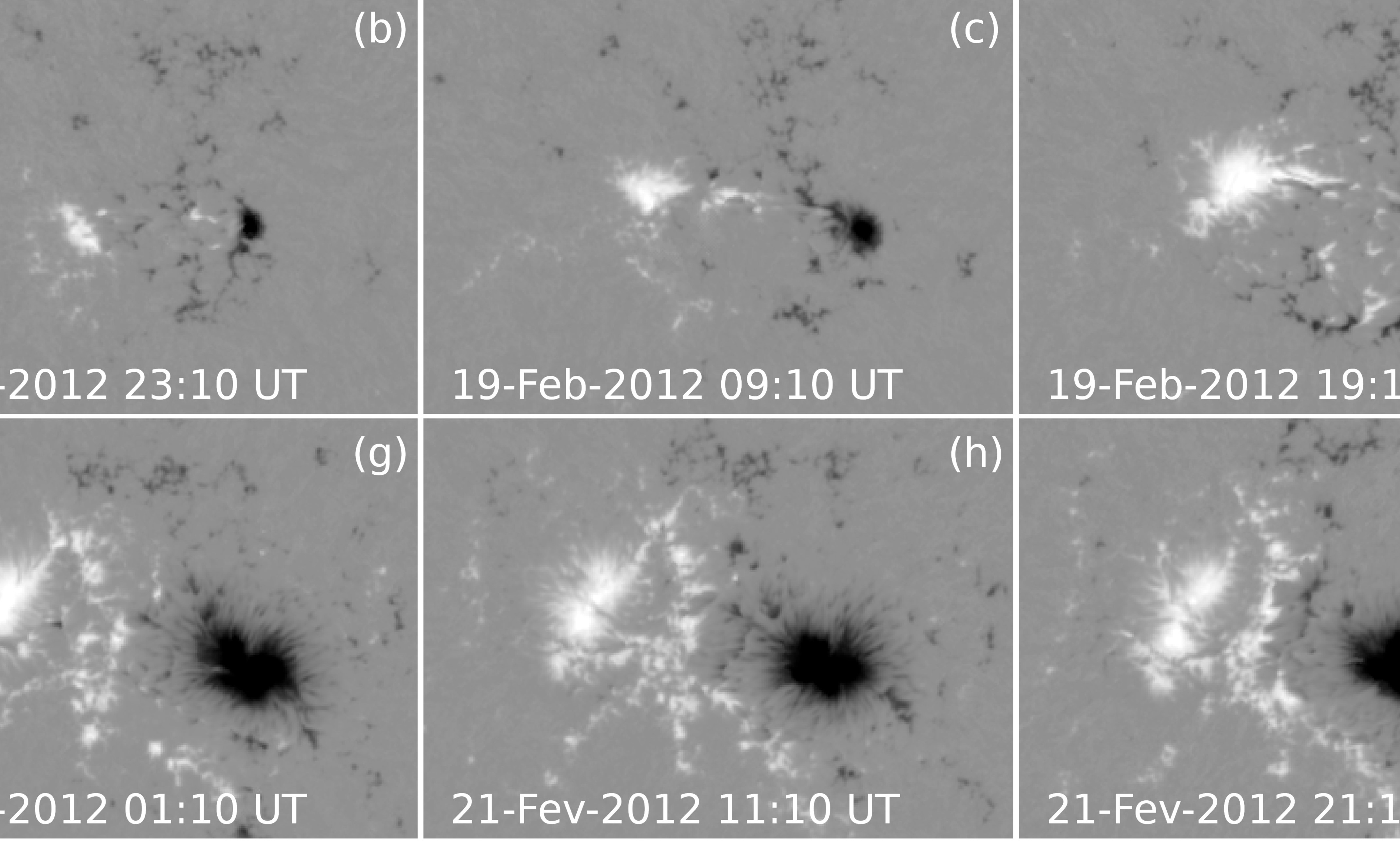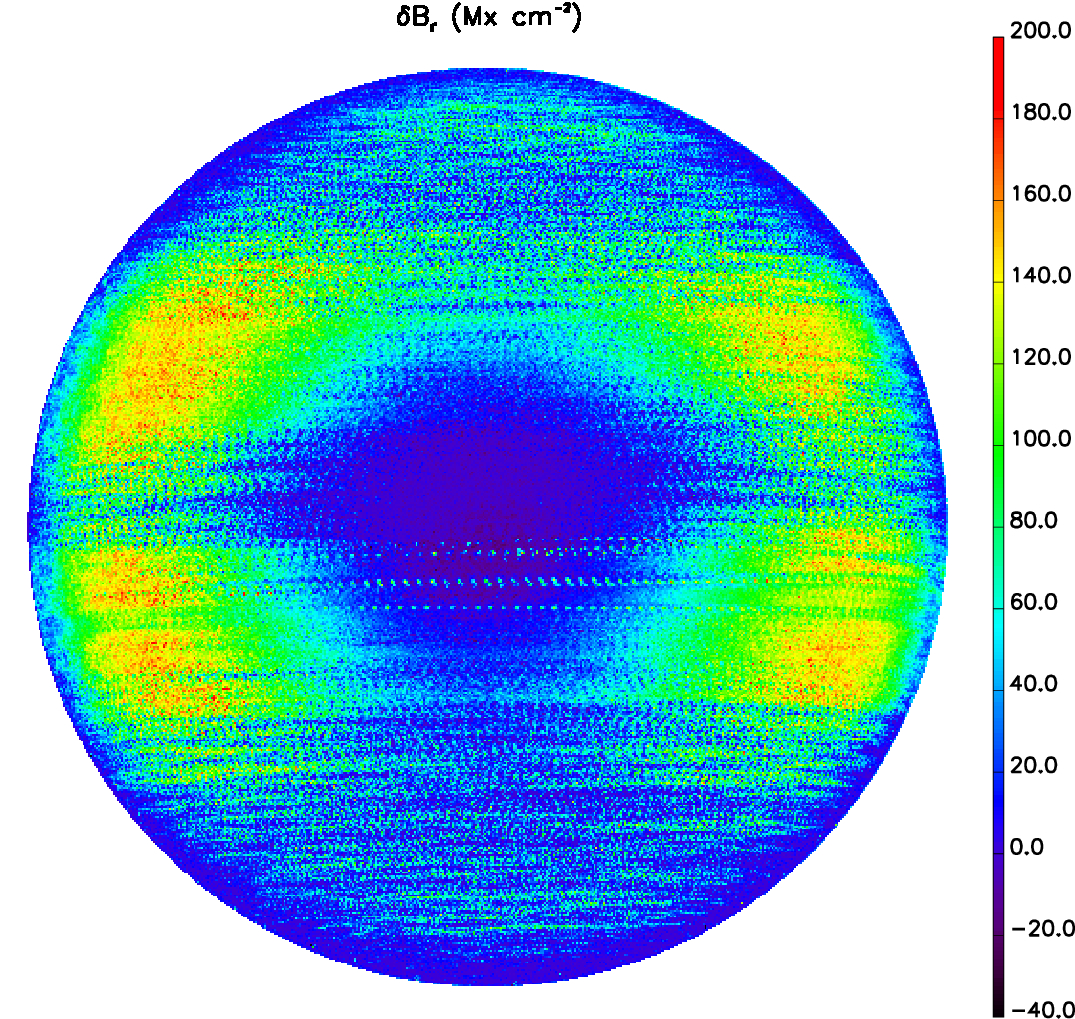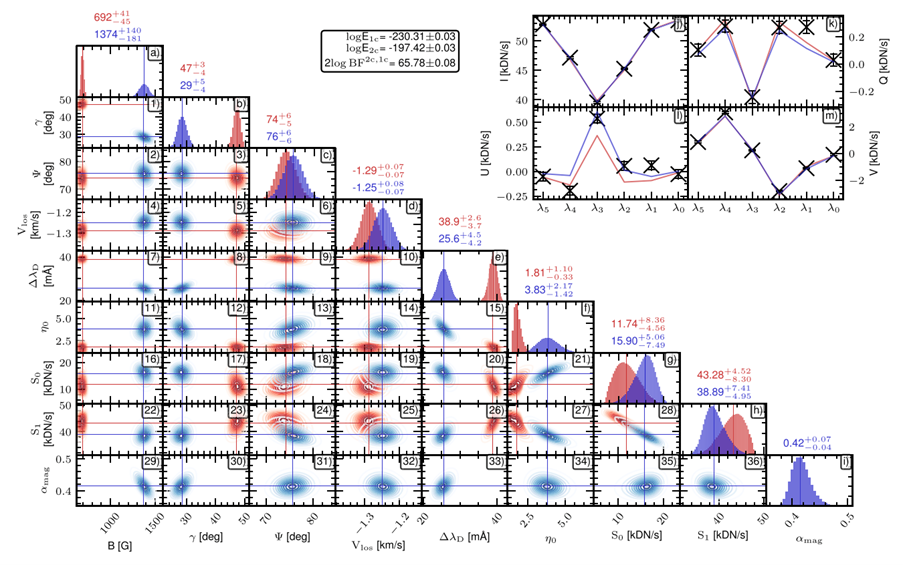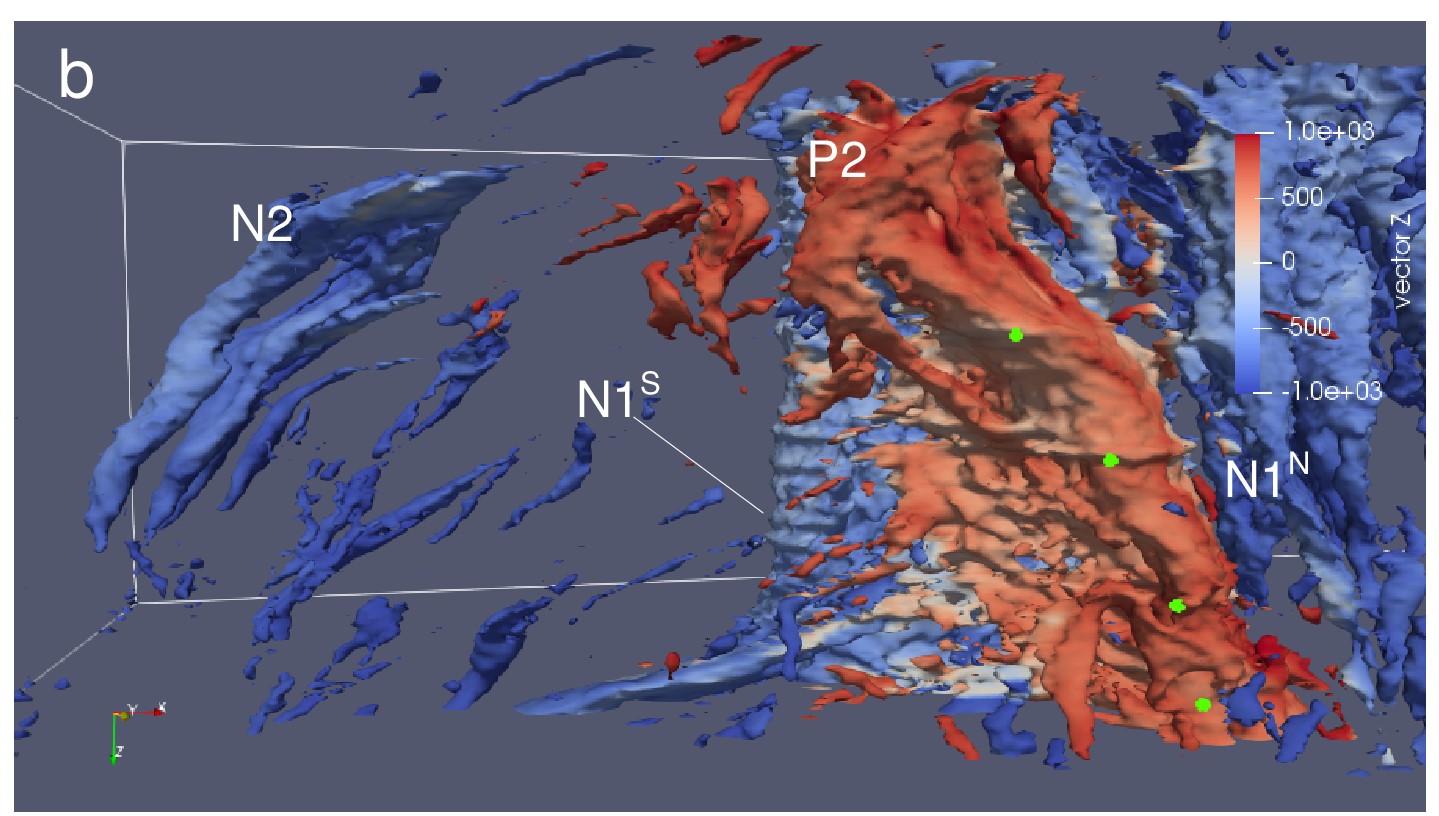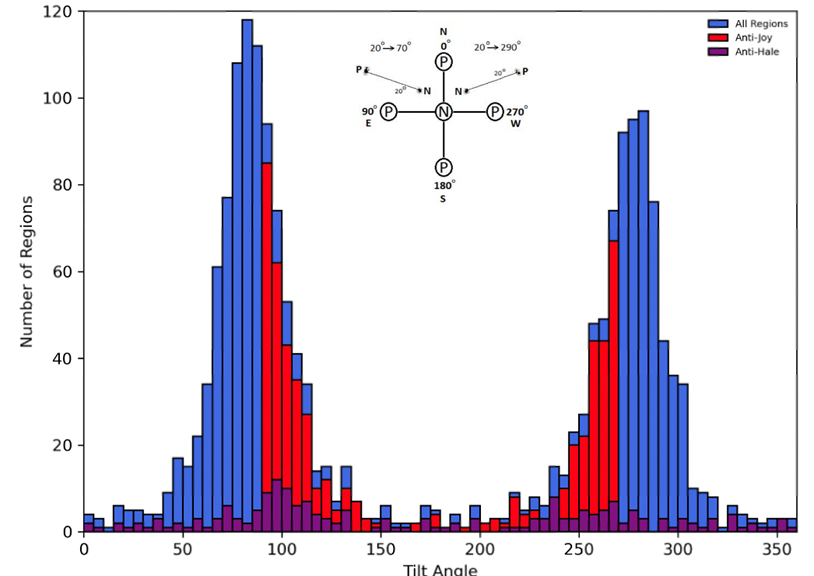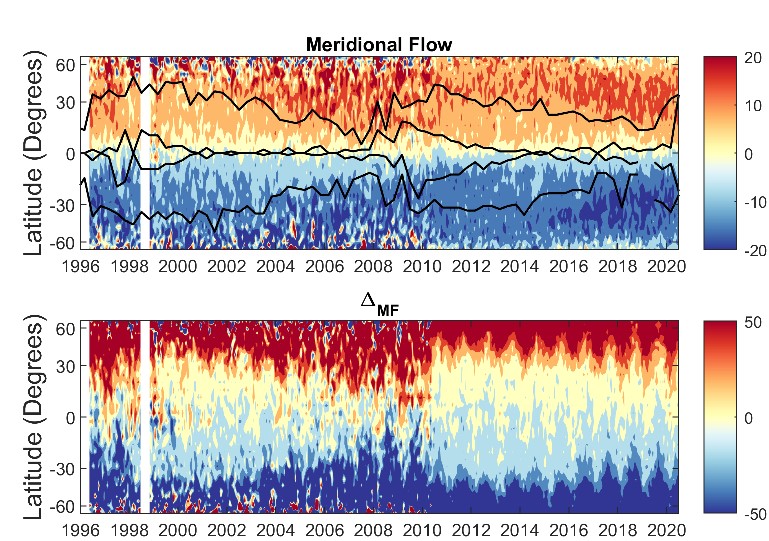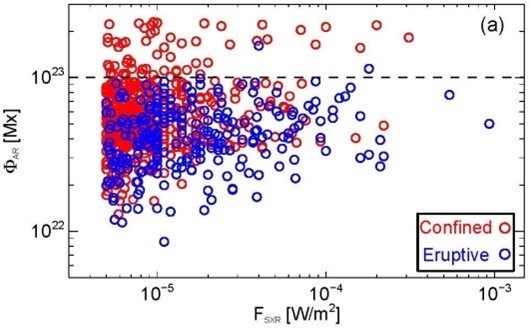Category Archives: Magnetic Field
176. On the Hemispheric Bias Seen in Vector Magnetic Field Data
175. Solving a long-standing problem with the HMI data products
174. Toward Improved Understanding of Magnetic Fields Participating in Solar Flares: Statistical Analysis of Magnetic Fields within Flare Ribbons
173. Buildup of the Magnetic Flux Ropes in Homologous Solar Eruptions
172. Evolution of Bald Patches in a Major Solar Eruption
168. Introducing the SPEAR Catalogue from HMI Data
In order to make the properties of magnetic features observed by SDO/HMI more accessible, the Solar Photospheric Ephemeral and Active Region (SPEAR) catalogue has been created as an easy-to-read tabulated text file. Tilt angles from the SPEAR catalogue are shown as a histogram (top) and as a function of latitude (bottom) with colors indicating all regions (blue), regions with anti-Joy (red), and anti-Hale (purple) tilts. Over 40% of regions disobey the laws of Joy and Hale.

